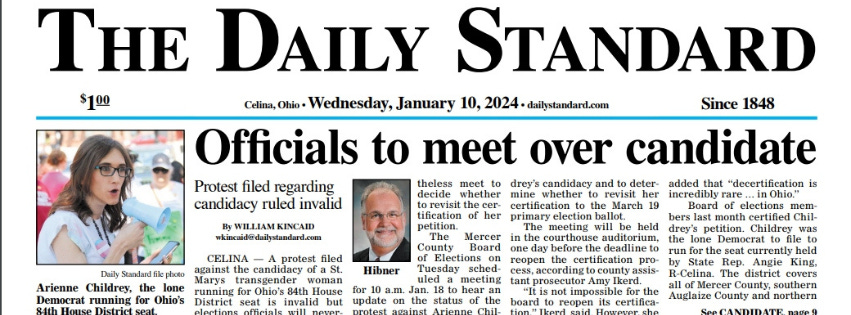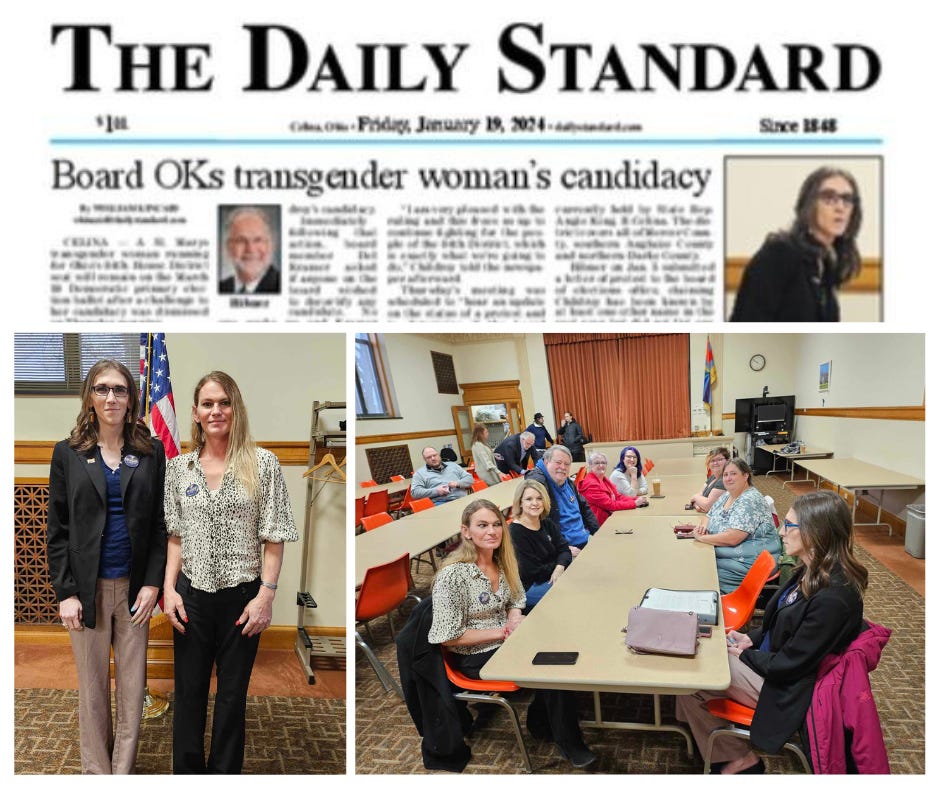It was September when I picked up the campaign petitions, and December 20th was the deadline to get everything turned in to the Board of Elections office. Between those dates, my life became a blur of events and gatherings. I threw myself into every Democratic function that would have me. Gathering signatures was like building a foundation brick by brick; every name was another solid step towards making the campaign a reality.. I even held our own “Meet and Greet” in Celina, determined to make a mark in the district.
The Celina Meet and Greet was a milestone—it was our first fully organized and sponsored campaign event. It was a mixed bag, if I’m being honest. I had a nagging feeling that I was jumping the gun; campaign season hadn’t really heated up for most down-ballot candidates, and many were still waiting to announce. Most weren’t holding events unless they were bracing for a bruising primary battle. But I forged ahead anyway. On the plus side, we snagged some local press coverage and even managed a brief television interview with the Lima news. The downside? Attendance was sparse, and not a single extra signature landed in our tally. Our core supporters showed up, and it gave us a chance to strategize, but I left with a valuable lesson for the future: unless you’re anticipating a fierce primary fight, holding pre-primary events in a rural district like ours may not the best use of campaign energy.
The week after, the deadline for submitting candidacy petitions loomed large, and even though it was mostly a formality, I was a bundle of nerves. All those hours spent collecting signatures, speaking to strangers, and attending meetings felt like they were riding on this single moment. The anxiety was real—there’s always that lingering fear of signatures being tossed out for silly reasons, like a shaky pen stroke or a minor technicality. Luckily, we’d built in a buffer. I remember we had 83 signatures, well above the 50 required. Still, I was on edge.
A friend and volunteer came with me to the Board of Elections to mark the occasion, snapping a few photos of my anxious look. We turned everything in, and then... we waited.
Campaigning slowed through the holidays. We kept up the social media hustle, refined our strategy, and took some much-needed time with loved ones. Then, in early January, I received the news: our petitions were certified. My name would be on the ballot for the March primary. Relief and excitement hit me all at once, but the feeling didn’t last long. That same evening, a message came in from Vanessa Joy, another potential trans candidate across the state. Her petitions weren’t certified, despite having the required number of valid signatures. The reason? She hadn’t included her deadname on the paperwork due to a legal name change within the last five years. My stomach dropped.
I’d had my name legally changed just over three years prior. Panic set in. That night, I dove headfirst into the Ohio Revised Code, searching desperately for any relevant clause. Eventually, I found it. I reached out to some friends within the party, seriously considering dropping out. That conversation stretched well past 2 a.m., and in the end, we decided I’d consult with the state party before making any drastic moves.
Multiple conversations later, the consensus was clear: stay in the race. With just three days until the deadline for filing protests against candidacies, I opted to lay low. But that became increasingly difficult as news of Vanessa’s story spread, and with it, my name and another trans candidate’s surfaced in the media. I ducked reporters as best I could, but with the protest deadline fast approaching, tension was high.
That deadline fell on my birthday, January 5th. My husband and I had planned a quiet dinner followed by a gathering with friends. Right in the middle of dinner, my phone buzzed—a local reporter informed me that a protest had been filed by the county Republican Party chair. So much for a carefree celebration.
Despite feeling crushed, we carried on with the evening’s plans. I’ll admit, I drank more Moscato than I had in years.
Over the next few days, messages of support poured in. Organizations, individuals, allies—they all reached out. I spoke with an attorney, planning for every possible outcome. I’ll keep the details of that advice close to the chest; no need to give Republicans a blueprint for future attacks on trans candidates.
Eventually, I decided to speak with the press. For a while, it felt like I was doing back-to-back interviews, barely catching my breath in between. Then, the notice came from the Board of Elections. My hearing was scheduled. I wasn’t required to attend but I knew I would.
The hearing day arrived, and I wasn’t alone. Supporters gathered around me, including Bobbie Arnold, the other trans candidate. She’d already had her own hearing, which resulted in the board taking no action against her candidacy. But mine felt different—there was a protest filed.
We entered the courthouse auditorium and kept our distance from the opposition. The county prosecutor approached me beforehand, explaining she would argue the protest’s invalidity since it had been filed by a Republican, who, by law, couldn’t challenge a Democratic primary candidacy. She expected the board to vote accordingly.
The board did just that, unanimously rejecting the protest. Then, they confirmed my certification without reconsideration. I was stunned. Relief washed over me. A unanimous decision in such a divided time? I hadn’t dared to hope for it.
I gave a brief interview, then joined friends for a celebratory breakfast. The whirlwind of media interest ebbed, and we shifted focus back to the primary campaign. It was a wild ride, but I wouldn’t trade a minute of it. Every twist, every gut-wrenching moment only reinforced my resolve for the road ahead.








